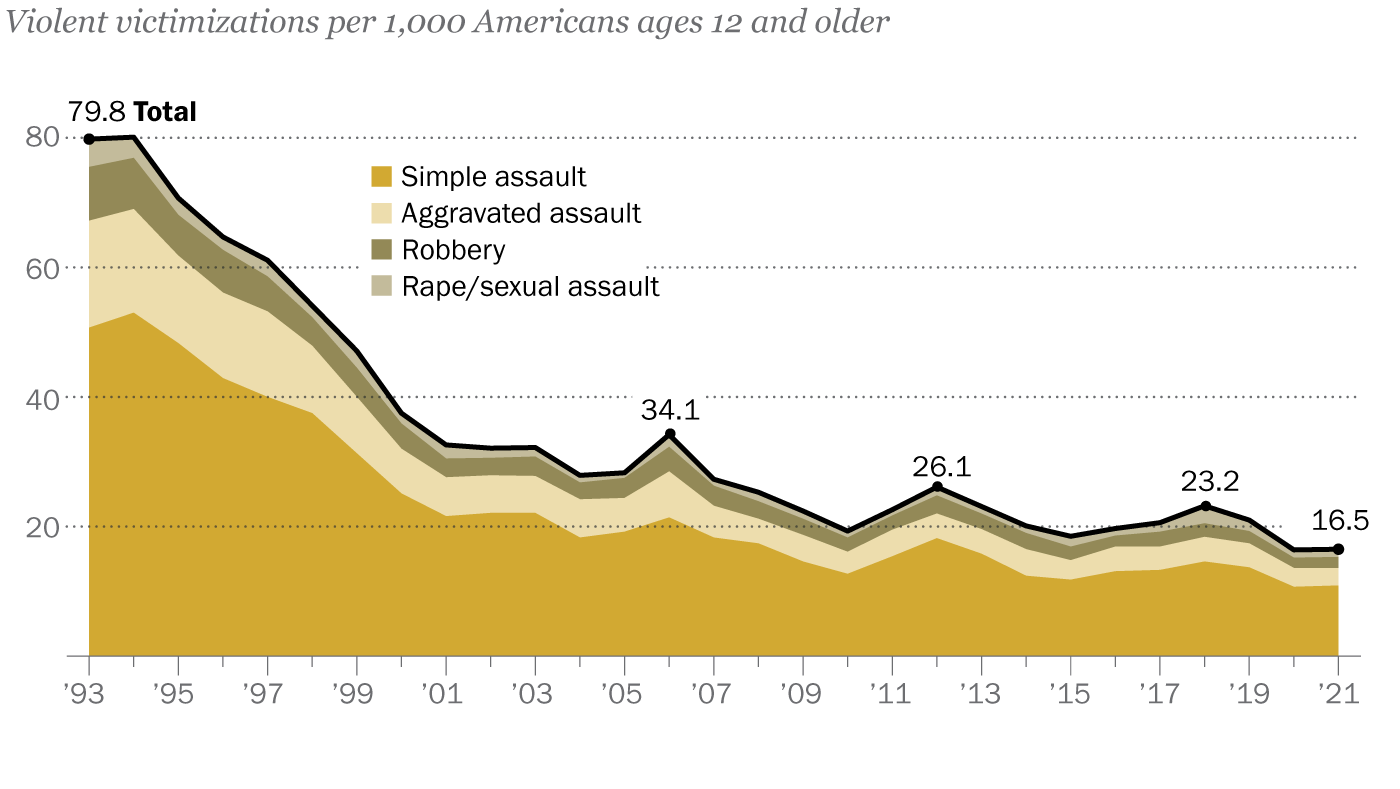
Excellent article in USA Today from Adam Gelb, the President and CEO of the Council on Criminal Justice. According to crime and justice trends, there is positive news in the realm of crime and punishment.
VIOLENT CRIME
Even after three years of increases, the rate of reported violent crime in America is half what it was at its peak in 1991, while burglaries and other property crimes are 63% lower than its peak in 1980. And the most recent data shows murder and other trend lines bending back down.
ARRESTS & INCARCERATIONS
In the mid-1990s, police arrested more than 15 million people a year. By 2019, arrests had dropped by a third, to about 10 million, and they fell even further during the pandemic. The U.S. incarceration rate remains among the highest in the world, but it, too, has declined, falling from its peak of more than 1 in every 100 adults in 2008 to 1 in 147 in 2021, a decline of a third. That translates to about a half million fewer people behind bars on any given day.
RECIDIVISM
Recidivism is the rate at which people on parole are sent back to prison for committing new crimes or violating the rules of their release. According to Gelb, that has dropped as well. The three-year prison return rate – the most commonly used measure – fell from 50% among people released from state prisons in 2005 to 39% among those released in 2012. And in juvenile justice, the number of youth removed from their homes for delinquency has plummeted by two-thirds, from more than 100,000 in 2000 to fewer than 37,000 in 2019.
RACIAL DISPARITIES
While troubling racial disparities in imprisonment persist, we’ve also seen some progress here. From 2000 to 2020, the disparity between Black and white adults in state prisons fell by 40%, from 8-to-1 to 5-to-1, and for drug offenses, it shrank by 75%. Black women remain nearly twice as likely to be held in prison as white women. However, they were over five times more likely at the turn of the century.
Taken together, the overall “footprint” of the justice system has shrunk substantially. In 2008, The Pew Charitable Trusts found that a whopping 1 out of every 31 American adults was in prison or jail or on probation or parole. According to new data from the Justice Department, that rate of correctional control had dropped to 1 in 48 by the end of 2021, a decline of a third.
Crime remains a serious and urgent concern. During the early days of the pandemic, as protests against police killings spread and gun sales spiked, homicide and other violent crimes rose. But as troubling as these recent increases are, it’s important to recognize that they occurred in the wake of significant improvements in safety.
STUDY THE GOOD NEWS AS WELL AS THE BAD ON CRIMINAL JUSTICE.
Gelb emphasizes that despite positive gains, the shrinking criminal justice footprint is rarely acknowledged or discussed. This leaves everyday Americans to conclude that nothing is improving.
“That’s understandable, but we ignore progress at our peril,” writes Gelb. Furthermore, pessimism leads to defeatist attitudes and clouds sober analysis of what is and isn’t working. It chases away elected officials, candidates and philanthropists who don’t want to hitch their wagons to perpetually losing causes. It burns out talented leaders and staff. And it feeds a cycle of cynicism that sows deeper and deeper distrust of the criminal justice system, of American institutions and of democracy itself.
“It’s crucial to face our ugly history. Justice demands that we identify and fix our problems. But to accelerate America’s march toward a safer and more just society, we also must recognize, examine and learn from what’s gone right.” ~Adam Gelb, the President and CEO of the Council on Criminal Justice.
Please contact my office if you, a friend or family member are charged with a crime. Hiring an effective and competent defense attorney is the first and best step toward justice.






